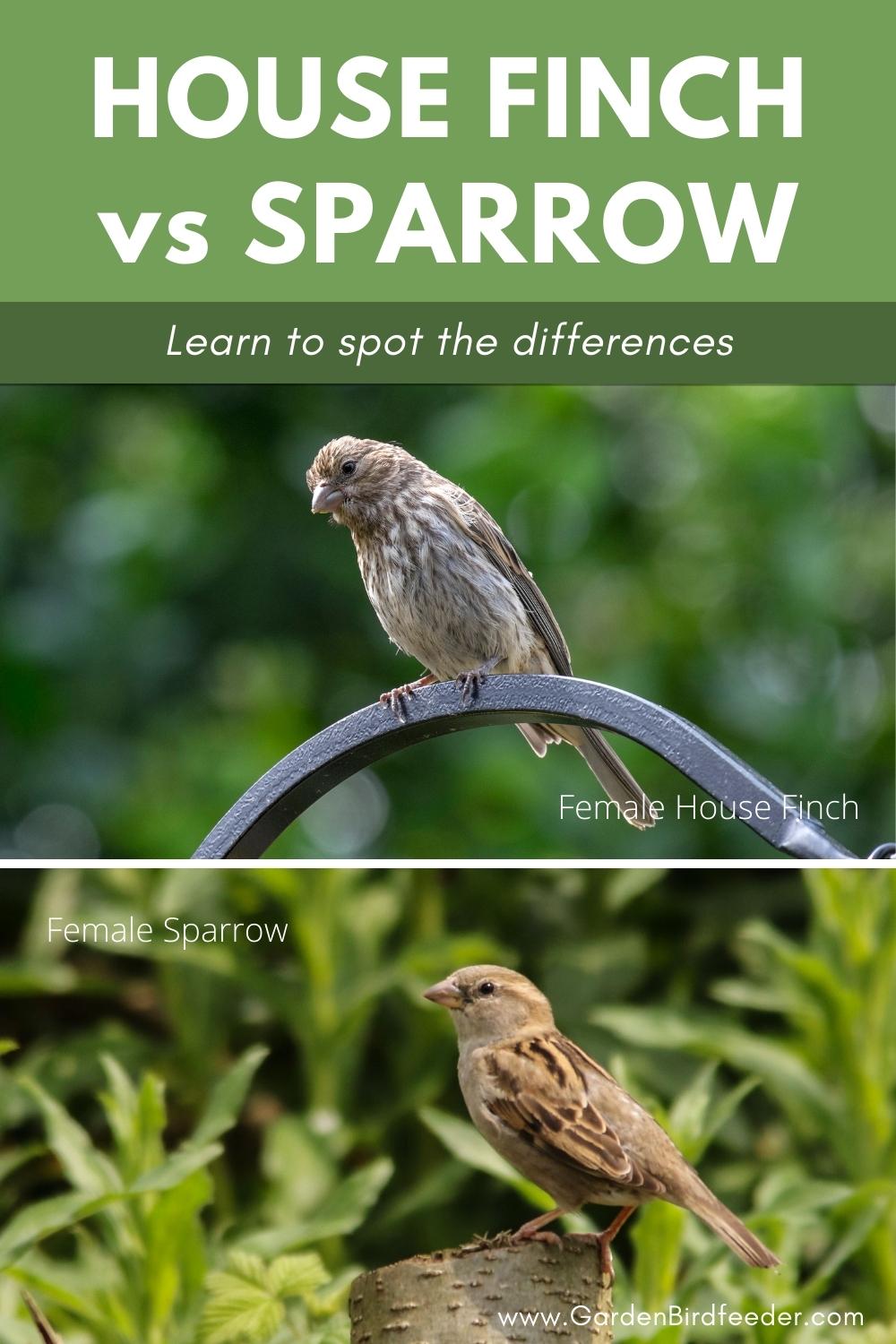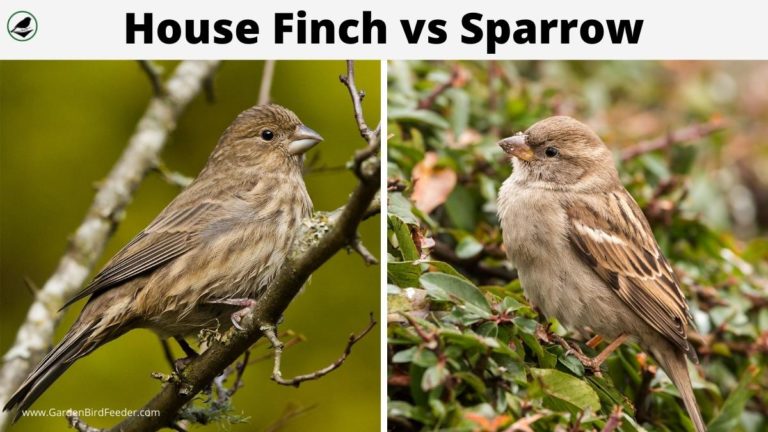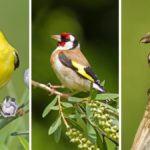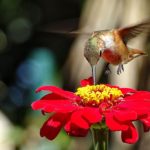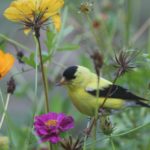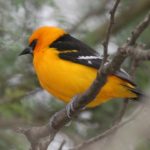If you’re like most people, you have beautiful birds flying around your yard, filling the air with wonderful sounds and making your space more serene. And while you know they’re birds, identifying them is a bit tricker, especially when trying to differentiate between a finch vs a sparrow.
After this article, you’ll master how to identify each bird and learn more about its physical features, diets, breeding habits, and preferred habitats.
Finch vs Sparrow: What Bird Am I Seeing in My Backyard?
Before we go any further, please note that this is a comparison between a house finch vs the house sparrow. There are many other types of finches each with its own unique coloring and habits. But the house finch is the subspecies that is most often confused with the sparrow.
House Finch Physical Features and Characteristics
House finches are all across North America. They are one of the more common visitors to our backyard birdfeeders.
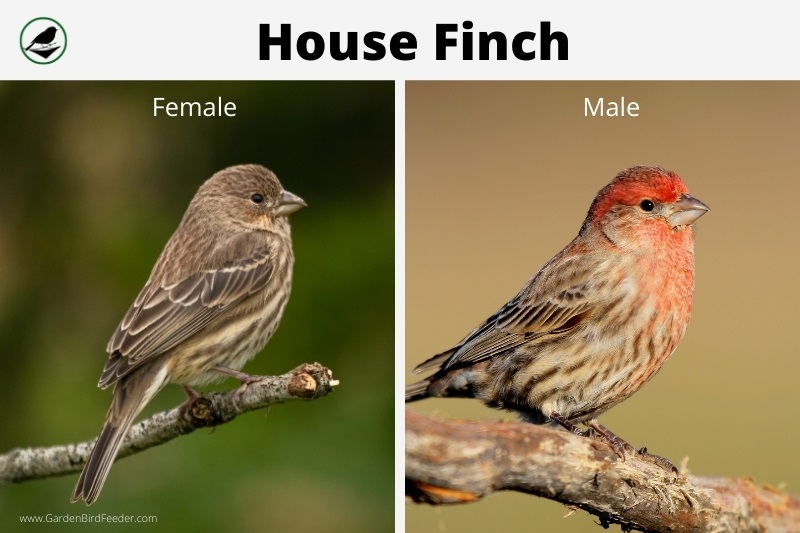
Physical Features
Identifying a finch requires a trained eye because males and females have different colors and markings.
- Females have brown on their upper body and streaks on their underbodies.
- Males have reddish shoulders, necks, and heads.
Adult birds are between 5 and 6 inches in length with a wingspan of 8 to 10 inches. While the markings of a male and female are different, finches have a brown, square-tipped tail, brown on their back, and a deeper gray on their feathers.
Males have changing color patterns that vary based on their diets. The berries and fruits that the males eat can lead to a pale yellow color or even a bright orange, although orange is rarer.
Diet
Finches may be found foraging in flocks, but occasionally, you may see them alone. These birds will forage on the ground or perch themselves on anything they can to reach food sources, such as on:
- Trees
- Shrub
- Weeds
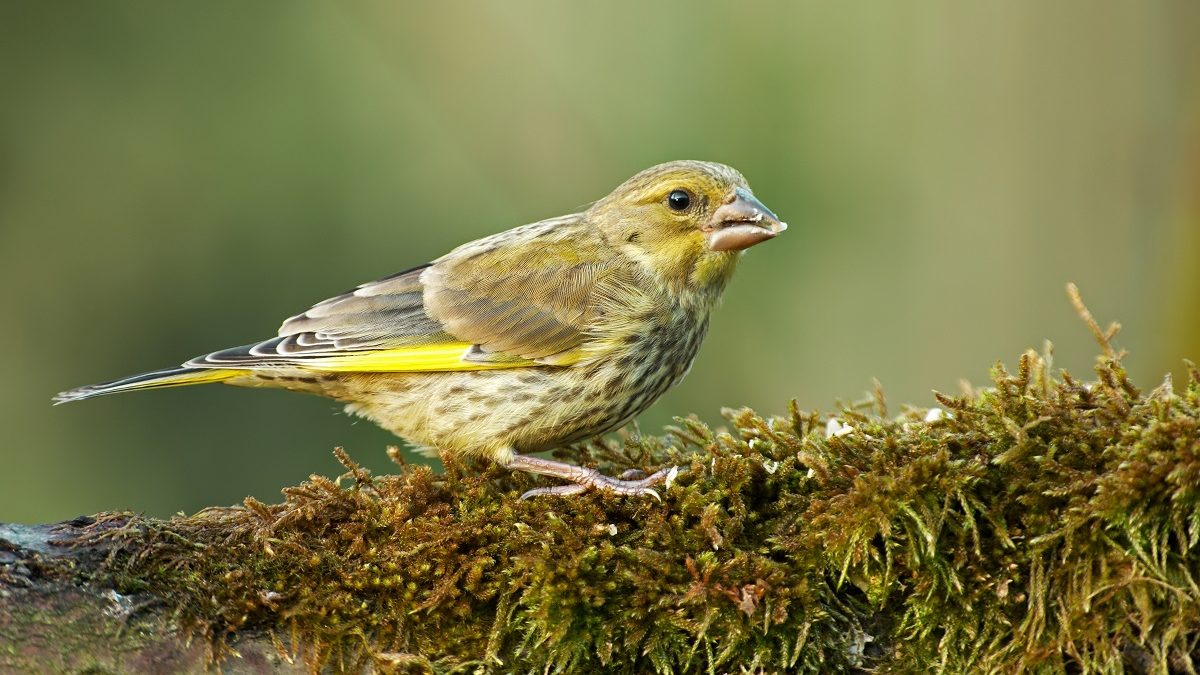
The primary diet of a house finch is weed seeds, but they’ll also eat buds and berries. In late summer and fall, the birds will eat small fruits. If small insects are present, a finch may eat them, too.
When the parents feed their young, the diet consists of regurgitated seeds.
Breeding
Finches brood up to three times per year and lay an average of 4 to 5 eggs each time. However, they may lay as little as two eggs or as many as six. The incubation period is around 14 days, and both parents will play an active role in feeding their young.
However, in two weeks or so, the young leave the nest.
Preferred Habitat
Finches were once, likely, located near streams in dry country, but they’re now located in:
- Cities
- Canyons
- Farms
- Suburbs
You can find finches all across North America, as far south the most southern Mexico border, in all of the United States, and stretching into southern Canada. House finches are native to western North America, but they can even be seen in Hawaii.
House Sparrow Physical Features and Characteristics
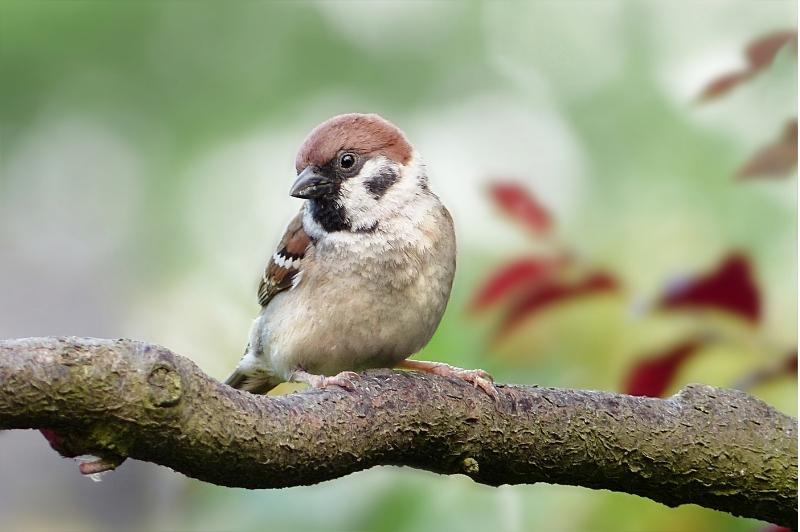
House sparrows love buildings, and you’ll find them near houses and buildings from the tip of South America into Canada year-round. Due to their innate ability to live near humans, these birds have easily adapted and spread across North and South America since they were first introduced in New York in 1851.
Physical Features
Birds in the sparrow family average 6.3-inches in length and are easier to identify than their finch counterparts. A few of the telltale signs that you’re viewing a sparrow are:
- Bill length of .59 inches or smaller
- Tail length of 2 – 2.6 inches
- Wingspan of 7.5 – 9.8 inches

Females are slightly smaller than males. Plumage includes various shades of brown and grey.
- Males have a dark grey color on their bills that extend down their backs. On the crown of the head, you’ll notice a chestnut brown coloring and white or light grey underparts.
- Females do not have black markings or a grey crown. You’ll notice the head and upper portion of the bird have darker streaks near the mantle and brown near the head. Underparts are a light grey-brown color, and the bill is brownish-grey.
Diet
House sparrows adapt their diets and will even feed off of crumbs left behind by humans in urban areas. However, the primary diet for a sparrow will include seeds. You’ll also find that these birds eat:
- Grass seeds
- Weed seeds
- Waste grain
During the summer months, sparrows will eat insects to maintain a healthy diet. You’ll find sparrows hop on the ground to forage and find food. However, if they can’t find food on the ground, they’re more than happy enough to perch themselves on stalks to reach seeds.
Sparrows will search tree bark for insects, and if there are dead insects on your car, they won’t have an issue eating them, too.
Breeding
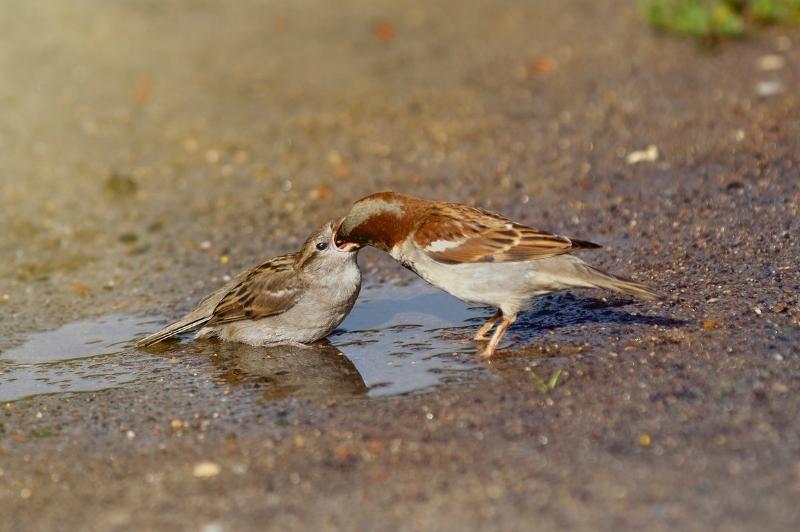
House sparrows have two or three broods each year, and their young leaves their nests within two weeks of hatching. Sparrows will lay 3 to 6 eggs each brood, but this figure can be as little as 1 to as many as 8 on rare occasions.
Incubation will last for 10 to 14 days.
Both sparrow parents will feed their babies.
Preferred Habitat
Sparrows love to be near buildings and houses due to their preference for nests being:
- Streetlights
- Eaves
- Walls
House sparrows prefer manmade structures for their nests over making their own natural nest. They’re also very protective over their nest holes and can be aggressive if another bird tries to take over their space.
One unique habit that makes it easier to distinguish a finch vs a sparrow is that sparrows love to take “dust baths.” Just like humans take baths, these birds will throw dirt and dust on themselves. The “ritual” is so important to the sparrow that they’ll even protect the small indentation on the ground that they make from other sparrows.
Birds That Resemble Finches or Sparrows
Now that you know the difference between a house finch vs house sparrow, you may be wondering if the bird(s) you’re seeing are either of these two types of bird or something completely different.
Unfortunately, there are very similar-looking birds that you may mistake for a finch or sparrow.
Birds That Look like House Finches
- Pine siskins
- Purple finch
Birds That Look like House Sparrows
- American tree sparrow
- Carolina wren
- Cowbird
Summary
We hope you have a better understanding of ways to distinguish between the house finch and the sparrow. Both species are frequent backyard visitors to our feeders and are fun to watch as they frolic in our backyards.
Like It? Pin It!
